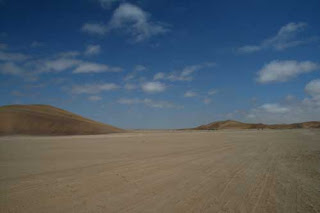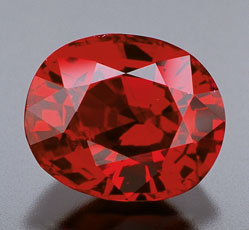“Rio, when my baby smiles at me I go to Rio de Janeiro”
Arrived in Rio last Sunday night. Not long after my book came out in 2001 I received a letter from Hans Stern, 84-year-old founder of H. Stern the world’s fifth largest jewelry company. It was gratifying to know that a man like Mr. Stern had not only liked the book but had taken the time to write. “Next time you are in Rio, stop in and have a Café Zihno.” So taking the man at his word I called. Next thing I knew a car arrived and my wife Rebekah and I were on our way to Stern’s headquarters in Ipanema.
We spent an enjoyable hour as promised over Café zihno. For those of you who have never been to Brazil, Café Zihno is the national drink and is very much like Italian espresso. Mr. Stern may be an octogenarian but he still loves his job and is in the office every day
Mr. Stern brought out his personal gem collection, which included a carat plus Emerald cat’s-eye. I haven’t seen one so fine since 1987. He also showed us a tray containing several hundred carats of sherry topaz and an exceptional large red topaz from the Capao mine, the best I have ever seen. We topped it all off with a personally conducted tour of the Stern headquarters.
cat’s-eye. I haven’t seen one so fine since 1987. He also showed us a tray containing several hundred carats of sherry topaz and an exceptional large red topaz from the Capao mine, the best I have ever seen. We topped it all off with a personally conducted tour of the Stern headquarters.
Lecture Series
I have been invited on this 2007 Regent (Radisson) Seven Seas World Cruise to deliver a series of lectures on gemstones. I have a grueling schedule that requires a 50-minute lecture about every three days. Other than that Rebekah and I are free to enjoy the many pleasures of the world cruise. Regent cruises are the last word in luxury, everything is included. With ports of call like St. Helena, Walvis Bay, Cape Town and Mombassa we will have little time to get bored.
St. Helena
Four days by ship out of Rio, we arrived sighted the island. St. Helena is a small island off the coast of West Africa. When Napoleon Bonaparte escaped from Elba the English, taking no chances exiled him to this small bit of volcanic rock, 500 miles from nowhere, after his final defeat at Waterloo. The former Emperor of the French spent his last six years on the island under the watchful eye of the British Army.
Originally discovered by the Portuguese, St. Helena was used for a refreshment station by Portuguese, Dutch and English ships navigating around the Cape of Good Hope. In those days, mariners often left goats and sheep and planted vegetables at places along their routes to reprovision other ships traveling that way.
The famous French Gem dealer and traveler, Jean-Baptiste Tavernier, the man who discovered what was to become the Hope Diamond, arrived on the island on February 8, 1649, twenty-two days out of Cape Town on a voyage from Batavia and noted the many lemon trees that grew on the island. Lemon juice, in those days, was the sovereign remedy for Scurvy, a disease caused by a lack of fresh vegetables.
We took the tour. Seems like you can see the whole place in about three hours. As to what the 6,000 or so present inhabitants on St. Helena’s 47 square miles is a mystery to me but the fishing is good.
Namibian Diamonds
Dateline: Walvis Bay, Namibia. Namibia, one of Africa’s “newest” nations, stretches 1300 km down Africa’s southwest coast, bordered in the north by Angola. to the south by The Republic of South Africa.
In 1908, a railway worker discovered the first diamonds in what was then the German colony of South West Africa. The discovery set off a free-for-all gem rush that ended only when the Colonial administration absorbed all private leases into one huge Concession, stretching the length of the country’s southern coast and some 100 km inland.
After the world war the territory became a League of Nations Protectorate administered by South Africa, which managed t
o hold onto the colony until 1990. Namibia has the richest marine diamond deposits in the world, with an estimated reserve of over 1.5 billion carats. All these deposits are secondary deposits meaning that the diamonds originally came from volcanic in situ deposits that were transported via the Orange river from South Africa and swept northward by the northwest current that runs just off the coast.
The average size of diamonds mined off the Namibian coast is a bit over ½ carat. A whopping 95% of these stones are gem quality.
Diamonds are responsible for 42% of all export earnings and 52% of government income and account for between 7-10% of the country’s GDP.



